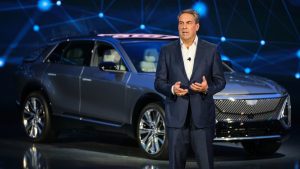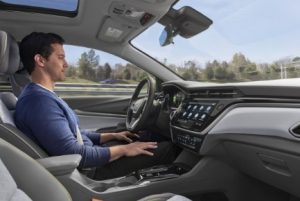Autos & Vehicles
Powerful Performance Meets Uncompromising Style: Introducing the Rivian R1T and R1S

Rivian, the American electric vehicle manufacturer, is making waves in the automotive industry with its groundbreaking models, the R1T pickup truck and R1S SUV. Combining powerful performance with uncompromising style, these vehicles are setting a new benchmark for electric adventure. In this article, we delve into the remarkable features of the Rivian R1T and R1S, exploring how they are reshaping the perception of electric vehicles and redefining the boundaries of what is possible in the realm of sustainable transportation.
I. Design: Striking a Balance Between Strength and Sophistication
The Rivian R1T and R1S stand out from the crowd with their bold and distinctive design. The vehicles possess a commanding presence, characterized by clean lines, muscular proportions, and an aggressive stance. The seamless integration of aerodynamic elements not only enhances their visual appeal but also contributes to improved efficiency. Rivian’s attention to detail is evident in the thoughtful design touches, such as hidden headlights and a spacious interior that combines comfort with premium materials, reflecting a perfect balance between strength and sophistication.
II. Electric Performance: Powering Thrills, On and Off the Road
Both the R1T and R1S showcase Rivian’s commitment to delivering exceptional electric performance. With their powerful electric motors and high-capacity batteries, these vehicles offer instant torque and impressive acceleration. The R1T can sprint from 0 to 60 mph in just a few seconds, while the R1S SUV delivers comparable performance. This exhilarating power is complemented by advanced all-wheel drive systems, allowing for confident off-road exploration. Rivian has truly shattered the perception that electric vehicles lack the thrills traditionally associated with internal combustion engines.
III. Adventure-Ready Capability: Unleashing the Explorer Within
The Rivian R1T and R1S are purpose-built for adventure, combining their electric powertrains with exceptional capability. The vehicles boast impressive ground clearance, advanced suspension systems, and robust off-road features, enabling them to tackle challenging terrains with ease. Whether it’s traversing rocky trails or fording streams, the R1T and R1S are designed to unleash the explorer within. With exceptional payload and towing capacities, these vehicles are not only meant for off-road enthusiasts but also cater to those with a need for practicality and versatility.
IV. Range and Charging: Empowering Long-Distance Journeys
Range anxiety is a thing of the past with the Rivian R1T and R1S. Equipped with large battery packs, these vehicles offer substantial driving ranges on a single charge. Rivian provides multiple battery options to cater to different needs, with the highest-range version surpassing 400 miles. Additionally, the company is actively expanding its charging network, ensuring convenient access to fast-charging stations for worry-free long-distance travel. This combination of ample range and a robust charging infrastructure empowers Rivian owners to embark on extended journeys with confidence.
V. Sustainability and Innovation: Pioneering a Greener Future
Rivian’s commitment to sustainability goes beyond the electrification of its vehicles. The company incorporates recycled and renewable materials throughout its manufacturing processes, minimizing its environmental impact. Rivian also actively engages in carbon offset initiatives, ensuring that its vehicles are not only clean in operation but also leave a positive ecological footprint. By pioneering a greener future, Rivian sets an example for the automotive industry and proves that sustainable transportation can coexist with exceptional performance and style.
Conclusion:
The Rivian R1T and R1S epitomize the marriage of powerful performance and uncompromising style in the realm of electric adventure. These vehicles challenge conventional notions of what electric vehicles can achieve, delivering exhilarating performance, exceptional capability, and striking design. Rivian’s unwavering commitment to sustainability and innovation further sets them apart, demonstrating that a greener future can be achieved without sacrificing power or luxury. With the R1T and R1S, Rivian is leading the charge towards a new era of electric transportation, one that offers the perfect synergy between thrilling performance and sustainable driving.
Autos & Vehicles
The Future of Autonomous Vehicles
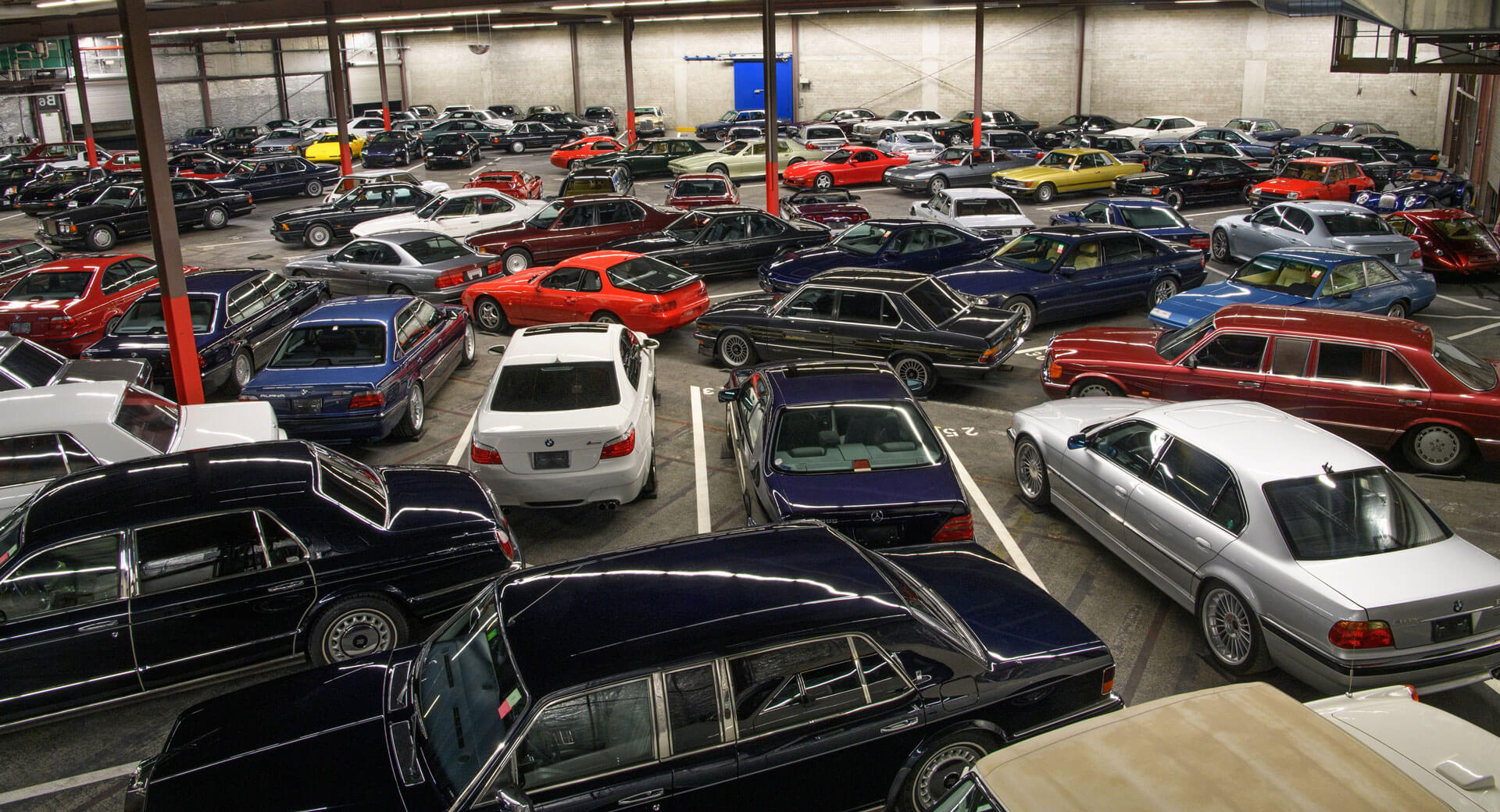
he development of autonomous vehicles represents one of the most transformative changes in the transportation industry. As technology advances and societal needs evolve, autonomous vehicles (AVs) are poised to revolutionize how we travel, impact various industries, and influence our daily lives. This article explores the future of autonomous vehicles, focusing on technological advancements, societal impacts, regulatory challenges, and potential benefits and drawbacks. Additionally, it includes comparative and analysis tables to provide a clearer understanding of the topic.
Technological Advancements
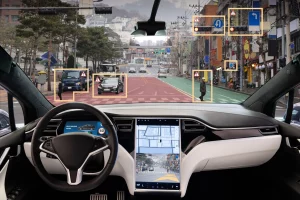
Image by: yandex.com
Advances in AI and Machine Learning
The backbone of autonomous vehicle technology is artificial intelligence (AI) and machine learning (ML). Recent advancements in these fields have significantly improved the capability of AVs to understand and interpret their surroundings. Machine learning algorithms enable vehicles to learn from vast amounts of data collected from sensors and cameras, improving their ability to make real-time decisions. AI advancements also enhance the vehicle’s ability to predict and respond to various driving scenarios, increasing safety and efficiency.
Sensor Technology
Autonomous vehicles rely heavily on sensor technology, including LIDAR (Light Detection and Ranging), radar, and cameras. Each of these sensors plays a crucial role in detecting and interpreting the vehicle’s environment. LIDAR provides a detailed 3D map of the surroundings, radar helps in detecting objects at a distance, and cameras offer visual information about road signs, traffic signals, and other vehicles. The continuous improvement in sensor technology is essential for enhancing the reliability and accuracy of AV systems.
Connectivity and V2X Communication
Vehicle-to-Everything (V2X) communication is another critical aspect of autonomous vehicle technology. V2X enables vehicles to communicate with each other and with infrastructure such as traffic lights and road sensors. This connectivity helps in coordinating vehicle movements, reducing traffic congestion, and improving overall road safety. The integration of 5G technology further enhances V2X communication by providing faster and more reliable data transfer.
Societal Impacts
Safety and Accident Reduction
One of the most anticipated benefits of autonomous vehicles is the potential reduction in traffic accidents. Human error is a leading cause of accidents, and AVs aim to minimize these errors through advanced algorithms and sensors. Studies suggest that widespread adoption of AVs could significantly reduce the number of accidents and fatalities on the roads. However, the transition period will be critical in addressing any safety concerns related to the technology.
Accessibility and Mobility
Autonomous vehicles have the potential to greatly improve accessibility for individuals with disabilities and the elderly. These vehicles can provide a new level of independence for those who are unable to drive themselves. By offering on-demand transportation solutions, AVs can help bridge mobility gaps and provide better access to various services and opportunities.
Environmental Impact
The environmental impact of autonomous vehicles is a mixed bag. On one hand, AVs can potentially reduce emissions through more efficient driving patterns and the integration of electric vehicle technology. On the other hand, increased convenience might lead to higher vehicle usage, potentially offsetting some of these benefits. The future environmental impact will largely depend on the adoption of sustainable practices and technologies.
Regulatory Challenges
Legal and Ethical Issues
The deployment of autonomous vehicles raises several legal and ethical issues. Determining liability in the event of an accident involving an AV is a complex issue that requires careful consideration. Additionally, ethical decisions related to programming AVs to handle emergency situations (e.g., choosing whom to prioritize in unavoidable accident scenarios) pose significant challenges.
Standardization and Certification
For autonomous vehicles to become mainstream, there needs to be a standardized approach to testing and certification. Regulatory bodies must develop comprehensive standards and protocols to ensure the safety and reliability of AV technology. Collaboration between manufacturers, policymakers, and industry experts is crucial in creating and implementing these standards.
Privacy Concerns
Autonomous vehicles collect vast amounts of data about their surroundings and passengers. Ensuring the privacy and security of this data is essential to gain public trust. Regulations need to address data protection and privacy concerns, ensuring that data is used responsibly and transparently.
Potential Benefits and Drawbacks
Benefits
- Increased Safety: Reduction in traffic accidents due to minimized human error.
- Enhanced Accessibility: Improved mobility for those unable to drive.
- Reduced Traffic Congestion: Optimized driving patterns and coordination among vehicles.
- Environmental Benefits: Potential for reduced emissions and more efficient driving.
Drawbacks
- High Costs: Expensive technology and infrastructure required for widespread adoption.
- Job Displacement: Potential loss of jobs in driving-related industries.
- Technology Limitations: Current limitations in technology and unforeseen challenges during implementation.
- Public Acceptance: Resistance to change and trust issues regarding the safety of AVs.
Comparative Table
| Aspect | Traditional Vehicles | Autonomous Vehicles |
|---|---|---|
| Driver Control | Manual | Automated |
| Safety | High human error risk | Reduced risk with technology |
| Accessibility | Limited to licensed drivers | Improved for disabled and elderly |
| Environmental Impact | Depends on vehicle type | Potentially lower emissions |
| Cost | Varied | High initial investment |
| Technology | Standard mechanical and electronic systems | Advanced AI, sensors, and connectivity |
| Regulation | Established and mature | Developing and evolving |
Analysis Table
| Factor | Impact of Autonomous Vehicles | Considerations |
|---|---|---|
| Technological Growth | Significant advancements in AI, sensors, and connectivity | Requires continuous innovation and investment |
| Safety | Potential reduction in accidents and fatalities | Transition period could be risky, requires robust testing |
| Societal Impact | Improved accessibility and mobility, potential environmental benefits | Need to address job displacement and public acceptance |
| Regulatory Challenges | Need for new standards and regulations | Balancing innovation with safety and privacy concerns |
| Economic Factors | High upfront costs, but potential long-term savings | Costs need to be managed for broader adoption |
Conclusion
The future of autonomous vehicles is promising, with significant potential to transform transportation, enhance safety, and improve accessibility. However, the journey toward widespread adoption is fraught with challenges, including technological limitations, regulatory hurdles, and societal impacts. As the industry evolves, ongoing research, innovation, and collaboration among stakeholders will be essential in realizing the full potential of autonomous vehicles while addressing their associated risks and concerns. The ultimate success of AVs will depend on balancing technological advancements with practical, ethical, and regulatory considerations.
Autos & Vehicles
Toyota Shareholders Re-Elect Chair Amid Governance Concerns
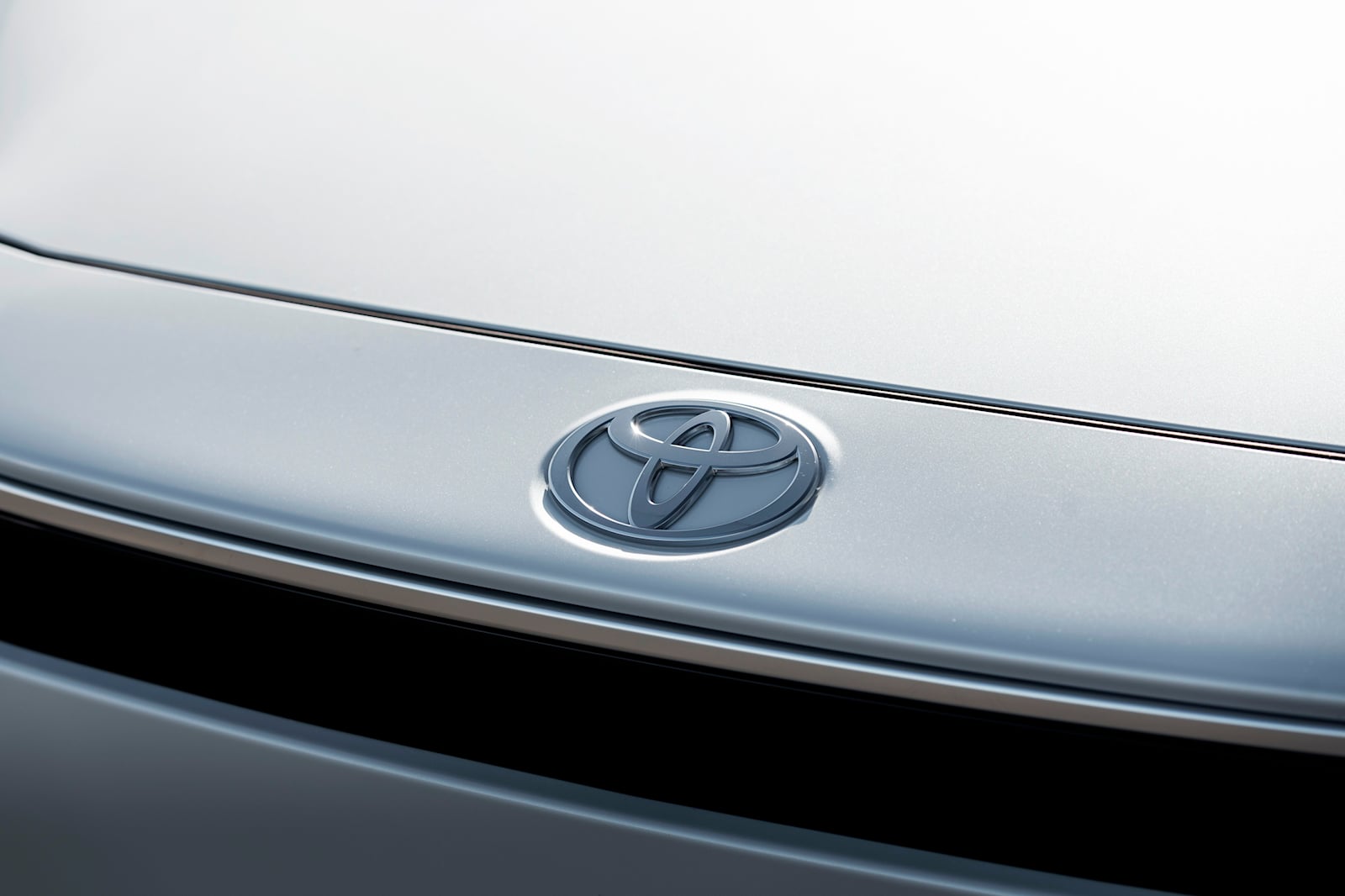
Toyota Motor Corporation, one of the world’s largest and most influential automobile manufacturers, recently held its annual general meeting (AGM). At this meeting, the shareholders re-elected Chairman Akio Toyoda amid growing concerns regarding the company’s governance practices. This decision has sparked a significant debate within the corporate governance community, raising questions about the balance between leadership continuity and the need for robust governance frameworks.
Background of Toyota’s Governance Structure
Toyota’s governance structure has historically been characterized by a strong leadership model, with significan

Image by: hearstapps.com
t influence wielded by the founding family. Akio Toyoda, the grandson of the company’s founder, has been at the helm of the company since 2009, serving as both president and chairman. His tenure has seen Toyota navigate through various challenges, including the global financial crisis, recalls due to safety issues, and the ongoing transition towards electric vehicles.
Governance Concerns Raised
The re-election of Akio Toyoda comes at a time when shareholders and governance experts are increasingly vocal about several concerns:
Board Independence
One of the primary concerns is the lack of independent directors on Toyota’s board. A board with a significant number of independent directors is crucial for ensuring unbiased decision-making and preventing conflicts of interest. Critics argue that Toyota’s board is overly dominated by insiders and family members, which may hinder objective oversight.
Transparency and Accountability
Another major issue is the level of transparency and accountability within the company. Stakeholders have expressed concerns about the adequacy of Toyota’s disclosures regarding its decision-making processes and the performance of its board. There is a call for more detailed reporting on governance practices and the rationale behind key decisions.
Succession Planning
Effective succession planning is critical for the long-term sustainability of any organization. Concerns have been raised about Toyota’s succession planning processes, particularly given the significant influence of the Toyoda family. Shareholders are questioning whether the company has a robust plan in place to ensure a smooth transition of leadership when the time comes.
Shareholder Response and Voting Outcomes
Despite these governance concerns, the majority of shareholders voted in favor of re-electing Akio Toyoda as chairman. This decision reflects a combination of factors:
Leadership Continuity
Many shareholders believe that Toyoda’s leadership has been instrumental in navigating Toyota through various crises and maintaining its competitive edge in the automotive industry. His deep understanding of the company and its culture is seen as a valuable asset.
Financial Performance
Toyota’s strong financial performance under Toyoda’s leadership has likely influenced shareholder sentiment. The company has consistently reported robust earnings and maintained a strong balance sheet, which provides a degree of confidence in its current leadership.
Strategic Vision
Toyoda’s strategic vision, particularly in advancing Toyota’s initiatives in electric and autonomous vehicles, has garnered support. His efforts to steer the company towards a more sustainable and technologically advanced future resonate with many stakeholders.
Comparative Analysis of Governance Practices
| Aspect | Toyota | General Best Practices | Analysis |
|---|---|---|---|
| Board Independence | Limited number of independents | Majority independent directors | Toyota lags behind in board independence, raising concerns about objectivity. |
| Transparency | Moderate | High transparency and detailed reporting | Toyota needs to enhance its transparency to meet best practices. |
| Succession Planning | Family-dominated | Clear, merit-based succession plans | The reliance on family leadership is seen as a potential risk. |
| Shareholder Engagement | Limited | Regular and detailed engagement | Improved shareholder engagement could address governance concerns more effectively. |
| Leadership Continuity | Strong under Toyoda | Balanced with governance checks | While leadership is strong, it should be balanced with better governance frameworks. |
Comparative Table: Toyota vs. Industry Peers
| Company | Board Independence | Transparency | Succession Planning | Shareholder Engagement | Leadership Continuity |
|---|---|---|---|---|---|
| Toyota | Moderate | Moderate | Family-dominated | Limited | Strong |
| General Motors | High | High | Merit-based | Extensive | Strong |
| Ford | High | High | Merit-based | Extensive | Strong |
| Volkswagen | Moderate | Moderate | Merit-based | Moderate | Strong |
| Honda | Moderate | Moderate | Merit-based | Moderate | Strong |
Recommendations for Enhancing Governance
To address the governance concerns and align more closely with best practices, Toyota could consider the following recommendations:
Increase Board Independence
Enhancing the independence of the board by appointing more independent directors could improve oversight and decision-making. This would help ensure that the board can provide unbiased guidance and hold the executive leadership accountable.
Enhance Transparency
Improving transparency through detailed and regular reporting on governance practices and decision-making processes can build trust with shareholders and other stakeholders. Clear disclosure of the rationale behind key decisions and the performance of the board would be beneficial.
Strengthen Succession Planning
Developing a more robust and transparent succession planning process is crucial. This should involve identifying and grooming potential leaders from within the company based on merit rather than familial ties. A clear succession plan would provide stability and reassure investors about the company’s future.
Improve Shareholder Engagement
Engaging more effectively with shareholders through regular updates and open dialogues can help address their concerns and incorporate their feedback into governance practices. This proactive approach can enhance shareholder trust and support.
Conclusion
The re-election of Akio Toyoda as chairman of Toyota amid governance concerns highlights the complex interplay between leadership continuity and the need for robust governance frameworks. While Toyoda’s leadership has been pivotal in guiding Toyota through challenging times and maintaining its competitive edge, the company must address the governance concerns raised by shareholders and experts. By increasing board independence, enhancing transparency, strengthening succession planning, and improving shareholder engagement, Toyota can build a more resilient and sustainable governance model that supports its long-term success.
Analysis Table
| Issue | Current State at Toyota | Recommended Improvement | Expected Outcome |
|---|---|---|---|
| Board Independence | Limited number of independents | Increase independent directors | Improved oversight and decision-making |
| Transparency | Moderate | Enhance transparency and reporting | Increased trust and accountability |
| Succession Planning | Family-dominated | Develop a merit-based succession plan | Stable leadership transition |
| Shareholder Engagement | Limited | Improve regular and detailed engagement | Better alignment with shareholder interests |
| Governance Framework | Needs strengthening | Adopt best practices in governance | Enhanced corporate governance and sustainability |
By addressing these key areas, Toyota can align itself more closely with global best practices, ensuring that it remains a leader not only in the automotive industry but also in corporate governance.
Autos & Vehicles
The Future of Hands-Free Driving: Safety Insights from GM’s Mark Reuss

A Message from General Motors President Mark Reuss
-
Business1 year ago
Cybersecurity Consulting Company SequelNet Provides Critical IT Support Services to Medical Billing Firm, Medical Optimum
-
Business1 year ago
Team Communication Software Transforms Operations at Finance Innovate
-
Business1 year ago
Project Management Tool Transforms Long Island Business
-
Business11 months ago
How Alleviate Poverty Utilized IPPBX’s All-in-One Solution to Transform Lives in New York City
-
health1 year ago
Breast Cancer: The Imperative Role of Mammograms in Screening and Early Detection
-
Sports1 year ago
Unstoppable Collaboration: D.C.’s Citi Open and Silicon Valley Classic Unite to Propel Women’s Tennis to New Heights
-
Art /Entertainment1 year ago
Embracing Renewal: Sizdabedar Celebrations Unite Iranians in New York’s Eisenhower Park
-
Finance1 year ago
The Benefits of Starting a Side Hustle for Financial Freedom




